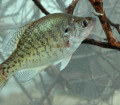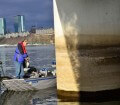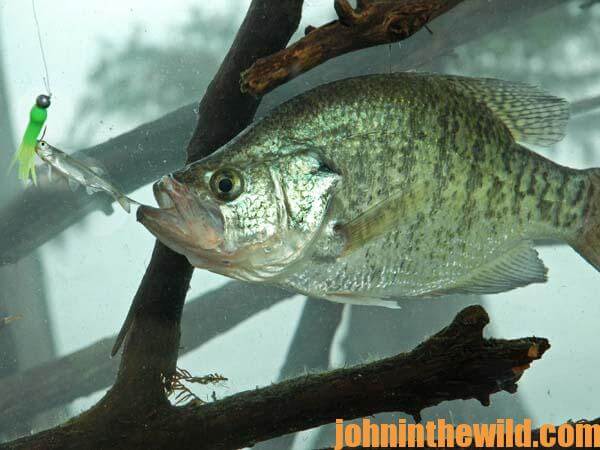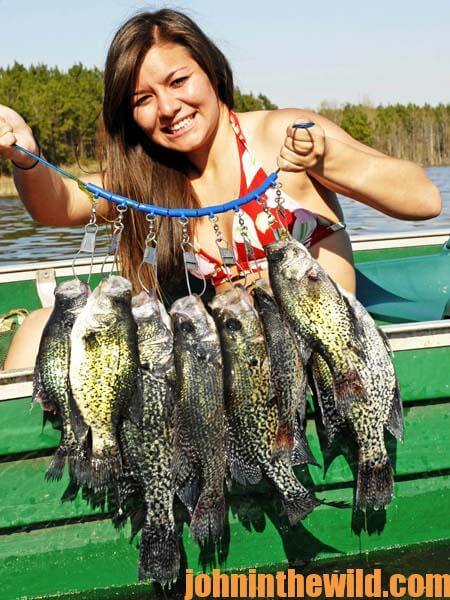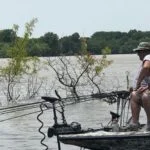John’s Note: During the spring when the weather and the water heat-up, the crappie move into the shallows near the bank to spawn. But oftentimes a late winter cold front can drive the crappie from the banks to open water. Also in many sections of the U.S., the water’s still cold or cool in mid-March to the end of March. As I investigated how to find deep-water crappie not on the banks in the spring and at other times of the year, I learned that the most-consistent place to catch crappie at any time of the year is away from the bank.
Most fishermen who put-out crappie attractors place the brush or the stake beds in either shallow or deep water.
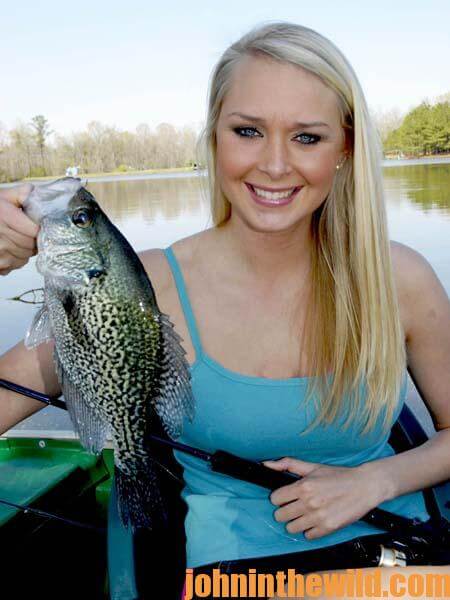 However, there’s a strong case to be made for building brush shelters between the deep water and the shallow water of any reservoir or river, because crappie have a seasonal migration route they travel just as bass do. In the spring, crappie move out of the deep river and creek channels into secondary creek channels and then to shallow water where they spawn. After they spawn, they return to the area between the creek channel and the banks before the temperature of the water drives them deep again. Serious crappie fishermen have learned that building brush shelters between the shallow water and the creek channel and fishing these structures consistently will produce more crappie during the spring and the fall than fishing either the deep or the shallow water.
However, there’s a strong case to be made for building brush shelters between the deep water and the shallow water of any reservoir or river, because crappie have a seasonal migration route they travel just as bass do. In the spring, crappie move out of the deep river and creek channels into secondary creek channels and then to shallow water where they spawn. After they spawn, they return to the area between the creek channel and the banks before the temperature of the water drives them deep again. Serious crappie fishermen have learned that building brush shelters between the shallow water and the creek channel and fishing these structures consistently will produce more crappie during the spring and the fall than fishing either the deep or the shallow water.
Crappie will hold in a staging area, which usually is between the creek channel they have migrated up into the shallow water and the bank, before they go to the bank to spawn. Crappie are searching for cover to hold in or around this staging area. If they find that cover, they’ll remain on the cover until they go to the bank. Then they’ll hold on the cover until they’ve made enough trips between the cover and the bank to spawn-out all their eggs. They’ll also stay in this region until the water heats-up to the point that they have to return to the creek channels and eventually the river channels during hot weather. Then in the fall of the year when once again crappie move to shallow water, the crappie will inhabit these staging regions and move from the staging areas to the bank and away from the bank as the water begins to cool down. As the water becomes colder, the crappie will spend more time on these fish attractors and less time in close to the shore, until the water is so cold that they must move back to the creek channels and even to the main river channels. To consistently catch more crappie during the fall and the spring, the angler should build or fish cover between the creek channel and the shallow-water spawning areas, no matter what the weather condition.
To learn much more about crappie fishing, get John E. Phillips’ Kindle eBooks and some print books, “Crappie: How to Catch Them Fall & Winter,” “Crappie: How to Catch Them Spring and Summer” and “Catch Cold Water Crappie Now.” Click here to get these books.

